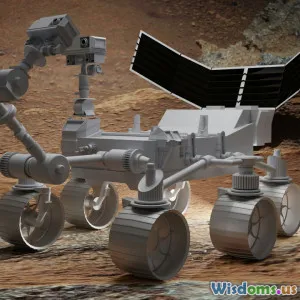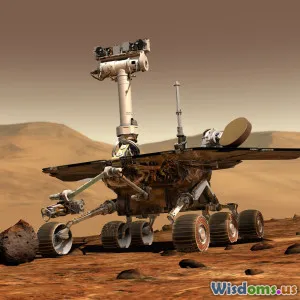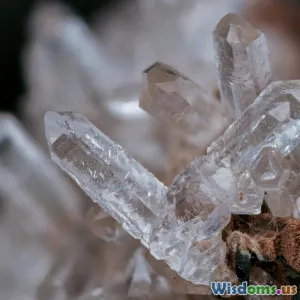
Understanding the Martian Atmosphere
5 min read Explore the unique characteristics and composition of Mars' atmosphere in this detailed examination. (0 Reviews)
Understanding the Martian Atmosphere
Mars, often called the Red Planet, has captivated human imagination for centuries. Its intriguing surface, with canyons, volcanoes, and signs of former water bodies, has led scientists to explore its atmosphere in detail. Unlike Earth, Mars has a thin atmosphere that presents unique challenges and opportunities for exploration and potential colonization. This article will delve into the composition, characteristics, weather patterns, and implications of the Martian atmosphere.
Composition of the Martian Atmosphere
The Martian atmosphere is predominantly composed of carbon dioxide (CO2), accounting for about 95.3% of its makeup. The remaining composition includes:
- Nitrogen (N2): 2.7%
- Argon (Ar): 1.6%
- Oxygen (O2): 0.13%
- Water Vapor (H2O): Up to 0.03% (varies with seasons)
- Trace amounts of other gases, including methane (CH4), which has intrigued scientists due to its potential biological origins.
This composition is starkly different from Earth's atmosphere, which is about 78% nitrogen and 21% oxygen. The thin Martian atmosphere, with a surface pressure less than 1% of Earth's, poses significant challenges for human exploration and habitation.
Characteristics of the Martian Atmosphere
1. Thinness
The thin atmosphere results in less insulation from solar radiation and a more significant temperature range. Average temperatures on the Martian surface hover around -80 degrees Fahrenheit (-62 degrees Celsius), but can vary widely from -195 F (-125 C) at the poles during winter to a mild 70 F (20 C) near the equator in summer.
2. Dust Storms
Mars is famous for its global dust storms, which can cover the entire planet and last for weeks or even months. These storms can reduce visibility and affect solar-powered equipment, posing challenges for rovers and future human habitats. Understanding these storms is critical for planning future missions.
3. Seasonal Changes
The Martian atmosphere experiences significant seasonal changes. During the Martian summer, temperatures can rise enough to cause the sublimation of polar ice caps, releasing water vapor and carbon dioxide back into the atmosphere, which can lead to the formation of clouds and even precipitation, albeit rare.
4. Temperature Inversion
Mars often experiences temperature inversions, where the temperature increases with altitude rather than decreasing. This phenomenon can lead to stable weather conditions and, at times, cloud formation, providing insights into Martian meteorology.
Implications for Exploration
The composition and characteristics of the Martian atmosphere have profound implications for future exploration and colonization:
-
Breathable Air: With only trace amounts of oxygen and high carbon dioxide levels, creating a breathable atmosphere for humans will be a significant challenge. Technologies such as MOXIE (Mars Oxygen In-Situ Resource Utilization Experiment) aim to produce oxygen from CO2.
-
Radiation Protection: The thin atmosphere offers minimal protection from cosmic rays and solar radiation, necessitating robust habitat designs to shield future astronauts.
-
Water Resources: Understanding the behavior of water vapor and potential ice deposits in the Martian atmosphere is crucial for sustainable living and resource utilization.
-
Communication and Navigation: Dust storms can affect communication signals and navigation systems, which need to be accounted for in mission planning.
Conclusion
The Martian atmosphere's unique properties present both challenges and opportunities for scientists and future explorers. Understanding its composition, behavior, and seasonal changes is vital for planning human missions to Mars. As we continue to explore our neighboring planet, the insights gained from studying the Martian atmosphere will pave the way for advancements in space exploration and potential colonization. The journey to Mars is not just about reaching the Red Planet but also about understanding its environment and how humanity can adapt to it.
As we embark on this exciting frontier, the study of the Martian atmosphere will remain at the forefront of space research, guiding our efforts to unlock the secrets of Mars.
Rate the Post
User Reviews
Popular Posts





















